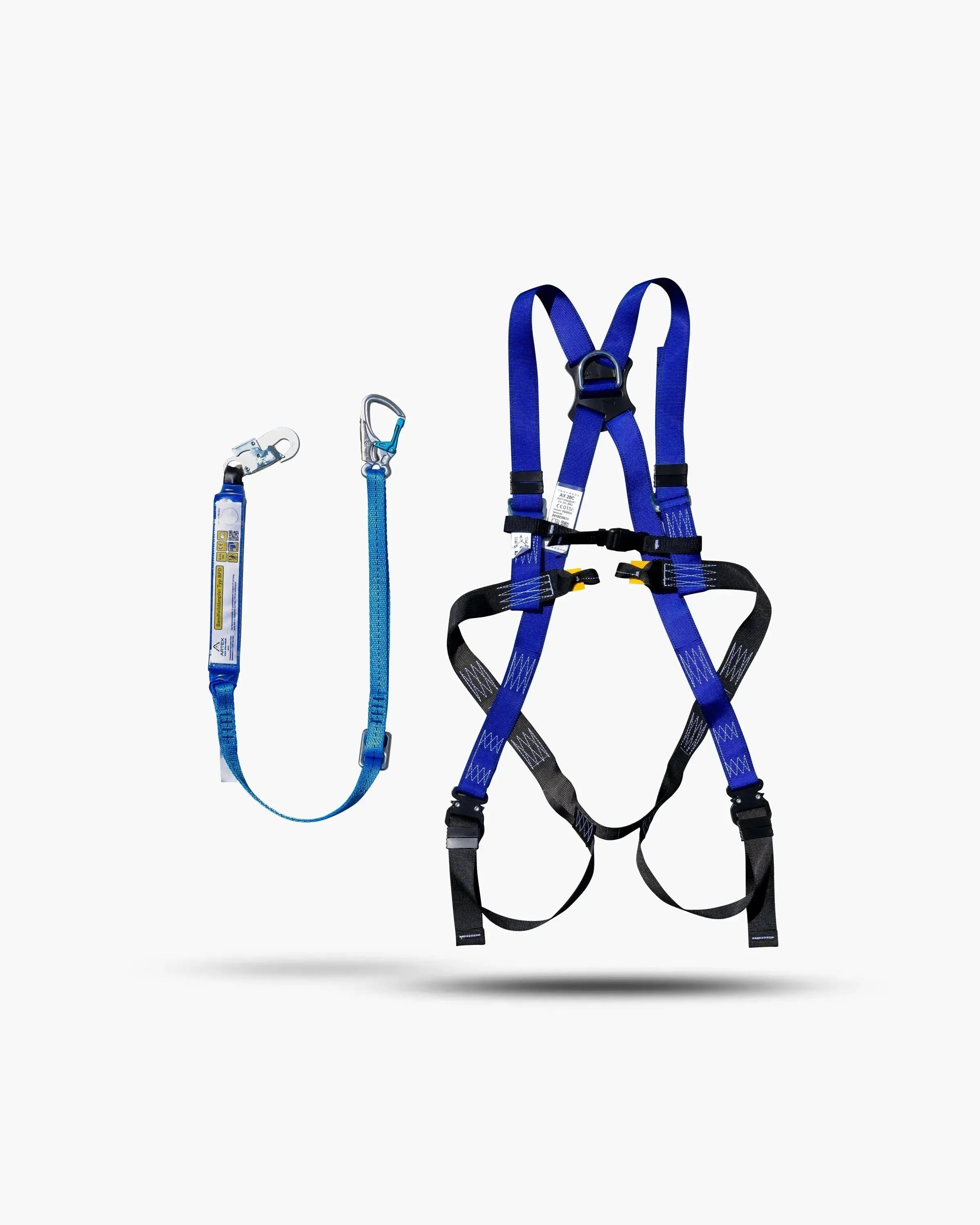The turning circle is an often underestimated but crucial factor when selecting work platforms and forklifts. It determines how much space a device needs to maneuver and thus directly influences the possible uses - especially in narrow or very restricted work areas. Similar to a car, where the turning circle determines maneuverability in the city or in parking lots, it also plays a central role in industrial trucks.
In this article, you will learn everything you need to know about the turning circle: what it means exactly, why it is so important for work platforms and forklifts, and how to choose the right device for your location.
In brief - what is the turning circle?
The turning circle is the smallest circle that a vehicle or device can describe at maximum steering angle. It is determined by the distance between the wheels and the maximum steering angle.
The smaller the turning radius, the more maneuverable the vehicle or machine is . For work platforms and forklifts, a small turning circle is particularly advantageous in order to be able to work efficiently in tight spaces.
Similar to a car: the turning circle of work platforms explained
As with cars, the turning circle is a decisive factor for maneuverability in aerial work platforms. A small turning circle enables easy maneuvering in tight spaces - comparable to a maneuverable city car that can handle tight curves and narrow alleys better than a large off-road vehicle. A small turning circle is a decisive advantage, especially in warehouses with narrow aisles, on construction sites with limited space, or indoors such as churches or exhibition halls.
Work platforms with a small turning radius, such as compact crawler or mast platforms, are ideal for such locations. Their design - a rotating upper carriage and a crawler chassis - ensures that they can turn almost on the spot. This is particularly important in sensitive environments with limited freedom of movement.
Why is the turning circle important for work platforms and forklifts?
An example:
A compact crawler platform is used in a church to carry out painting or restoration work on high ceilings. The limited space between the pews and pillars hardly allows for large movements. Thanks to the rotating upper carriage and a turning circle that can be achieved practically while standing still, the crawler platform can be positioned precisely without damaging the delicate structures. This is a clear advantage over larger platforms that would simply be unsuitable for such narrow and demanding locations.
The combination of compact design, small turning circle and maneuverable crawler chassis makes these platforms ideal for use in confined spaces where precision and maneuverability are important.
Devices with a small turning circle: advantages and areas of application
Devices with a compact turning circle are indispensable, especially in environments with narrow access or obstacles. The turning circle is defined by the length of the chassis and the design of the steering system. The smaller it is, the better devices can work in tight spaces.
Typical areas of application and examples:
• Warehouses: Electric forklifts with a tight turning circle navigate effortlessly between shelves that are parallel to each other and significantly accelerate the flow of materials.
• Indoors: Scissor lifts with compact chassis are perfect for working in confined indoor spaces such as shopping centers or event venues, where equipment also needs to move in narrow passageways.
• Churches and historic buildings: Crawler platforms with a rotating structure and a small turning circle can be used precisely between pillars and pews without causing damage. Due to their low weight and compact design, they are ideal for sensitive floors.
• Industrial plants: Articulated boom lifts offer flexibility for maintenance work between machines, which are often arranged in parallel production lines.
• Urban construction sites: Small, maneuverable platforms are ideal for working in inner cities where space is limited by narrow streets or parked vehicles. Here, the turning circle becomes the decisive factor for working safely and efficiently.
• Private properties: Compact crawler platforms are suitable for gardening or facade work because they can move precisely in tight spaces.
Conclusion: The turning circle as a decisive factor
The turning circle is an important criterion when selecting work platforms and forklifts. A small turning radius enables efficient work in confined spaces and increases work safety. When selecting equipment, the turning radius should therefore always be taken into account in relation to the planned location in order to achieve optimal results.
FAQ
How big is the turning circle of a car?
The turning circle of a car is usually between 9 and 12 meters, depending on the model. Compact vehicles often have a smaller turning circle of around 9 meters, while larger cars, such as SUVs or vans, need up to 12 meters or more.
What is the turning circle of a truck?
The turning circle of a truck is between 12 and 20 meters, depending on the vehicle type and size. Smaller trucks, such as 7.5-tonners, often have a turning circle of around 12 to 15 meters, while larger semi-trailers or articulated lorries require a turning circle of up to 20 meters or more.
What turning circle does a forklift have?
The turning circle of a forklift truck varies depending on the design and size. Compact electric forklift trucks often have a turning circle of around 1.5 to 2 meters, while larger diesel forklift trucks or off-road forklift trucks require turning circles of up to 4 meters or more . Forklift trucks with all-wheel steering or a swivel axle can further reduce their turning circle.
What is the turning circle of a work platform?
The turning circle of a work platform depends on the type and design. Scissor lifts and compact mast platforms often have a turning circle of around 2 to 5 meters, while larger telescopic platforms require up to 8 meters or more. Crawler work platforms with a rotating structure can turn almost on the spot and therefore have a very small turning circle.
How do you calculate the turning circle?
The turning circle is defined by the distance between the axles (wheelbase), the maximum steering angle of the wheels and the track width. Using these parameters, the turning circle can be determined either by geometric calculations or, in practice, by measuring the smallest circle that the vehicle can drive at full steering angle.
















Share:
Getting a crane license: Theory and practice for prospective crane operators
Lifting platform license 2025: Who needs it and why?